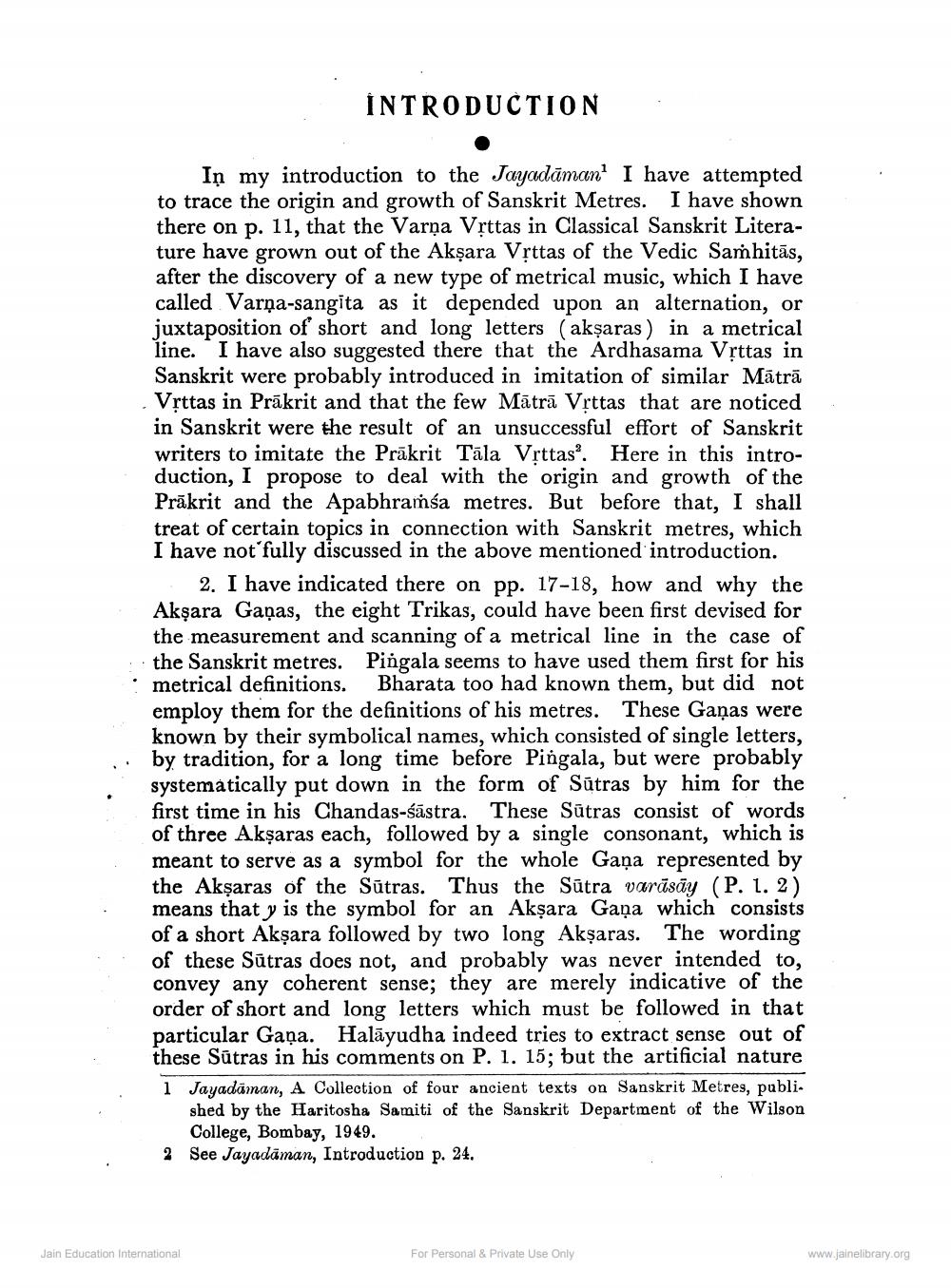________________
INTRODUCTION
In my introduction to the Jayadaman1 I have attempted to trace the origin and growth of Sanskrit Metres. I have shown. there on p. 11, that the Varna Vrttas in Classical Sanskrit Literature have grown out of the Aksara Vṛttas of the Vedic Samhitas, after the discovery of a new type of metrical music, which I have called Varpa-sangīta as it depended upon an alternation, or juxtaposition of short and long letters (aksaras) in a metrical line. I have also suggested there that the Ardhasama Vṛttas in Sanskrit were probably introduced in imitation of similar Mäträ Vṛttas in Prakrit and that the few Mäträ Vṛttas that are noticed. in Sanskrit were the result of an unsuccessful effort of Sanskrit writers to imitate the Prakrit Tala Vṛttas. Here in this introduction, I propose to deal with the origin and growth of the Prakrit and the Apabhramsa metres. But before that, I shall treat of certain topics in connection with Sanskrit metres, which I have not fully discussed in the above mentioned introduction.
2. I have indicated there on pp. 17-18, how and why the Akşara Gapas, the eight Trikas, could have been first devised for the measurement and scanning of a metrical line in the case of the Sanskrit metres. Piñgala seems to have used them first for his metrical definitions. Bharata too had known them, but did not employ them for the definitions of his metres. These Gaņas were known by their symbolical names, which consisted of single letters, by tradition, for a long time before Pingala, but were probably systematically put down in the form of Satras by him for the first time in his Chandas-sastra. These Sutras consist of words of three Aksaras each, followed by a single consonant, which is meant to serve as a symbol for the whole Gana represented by the Aksaras of the Sutras. Thus the Sutra varasay (P. 1. 2) means that y is the symbol for an Akṣara Gana which consists of a short Aksara followed by two long Aksaras. The wording of these Sutras does not, and probably was never intended to, convey any coherent sense; they are merely indicative of the order of short and long letters which must be followed in that particular Gana. Halayudha indeed tries to extract sense out of these Sutras in his comments on P. 1. 15; but the artificial nature 1 Jayadaman, A Collection of four ancient texts on Sanskrit Metres, published by the Haritosha Samiti of the Sanskrit Department of the Wilson College, Bombay, 1949.
2 See Jayadaman, Introduction p. 24.
Jain Education International
For Personal & Private Use Only
www.jainelibrary.org




